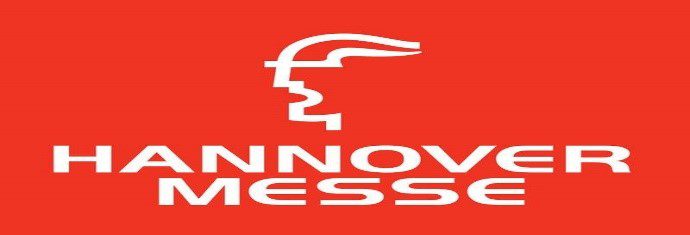Driven by a huge market potential and hundreds of millions of Internet users in the country, domestic telecommunications operators are getting more serious about developing their e-commerce businesses.

Three major telecommunication operators PT Telekomunikasi Indonesia (Telkom), PT XL Axiata and PT Indosat have allocated some amount of investment this year to revamp their e-commerce businesses.
Through its financial report, XL disclosed that on Jan. 27, it poured US$12.1 million into Elevenia (www.elevenia.co.id), its e-commerce outlet. That investment was equal to the amount invested in the marketplace by its partner SK Planet, a subsidiary of South Korean SK Telecom.
“The additional investment was part of Elevenia’s blueprint that has been agreed upon by both XL and SK Planet,” said Elevenia chief financial officer Lila Nirmandari.
Both business partners open the possibility of adding more fresh capital to the marketplace in the coming months, depending on the market dynamic, she told The Jakarta Post.
Lila said most of the $24.2 million investment would be used to support sales and promotion activities to make Elevenia known better outside Greater Jakarta.
Officially launched in March last year, Elevenia was first established in mid-2013 with initial investments of $18.3 million from XL and another $18.3 million from SK Planet, giving each of them a 50 percent of stake.
As of February, Elevenia had around 20,000 merchants and 2 million products comprising eight categories: fashion, beauty & health, babies & kids, home or garden, gadget, electronics, sports or hobby and service or food.
Elevenia aimed to increase its revenue by four to five times this year compared to its revenue of Rp 3.5 billion ($267,500) last year, leveraging on XL’s surging data subscribers.
Last year alone, around 51 percent of XL’s 59.6 million subscribers (including postpaid users) were data users.
Separately, Indosat also aims to boost its e-commerce outlet Cipika (www.cipika.co.id), which is run by the company’s digital commerce division.
Taking a bolder stance to differentiate itself from other marketplaces, Cipika plans to change its product focus from local food and snacks to gadgets this year.
“Focusing on gadget and electronics [this year], we want to leverage on Indosat’s core products and core networks,” said Indosat’s head of digital commerce division, Carlos Karo Karo. As of September last year, Indosat had 54.2 million subscribers, of whom around 50 percent were data users.
Cipika would sell phones bundled with Indosat’s mobile packages as well as phones bundled with competitors’ mobile packages, Carlos said.
In the span of November 2014 to January this year, gadgets contributed to around 30 percent of transactions in Cipika, while food and snacks remained a major contributor, he added.
In 2014, food and snacks contributed to around 80 percent of transactions in Cipika, while the remaining 20 percent was from another three product categories: gadgets, travel and lifestyle.
“This year, we hope 80 percent of the transactions will be from gadgets,” Carlos told the Post.
Carlos refused to disclose how much Indosat would invest for Cipika this year to support its marketplace business transformation, but said that an investment fund dedicated to the development of the marketplace was already in place.
Indosat usually spends between Rp 7 and 8 trillion in its annual capital expenditure, part of which is allotted for its digital service.
Carlos said Indosat would continue investing in its digital service in the future as it had still an ample room to grow.
Only around 1.7 percent of transactions in Indonesia’s market were currently done online and it was forecast to increase to 7 percent by 2019, he said.
“Cipika aims to cater between 17 and 20 percent of those online transactions in 2019,” he went on.
Meanwhile Blanja (www.blanja.com), a marketplace jointly run by state-owned telecommunications firm Telkom and US-based marketplace giant eBay, does not target specific growth rate this year but foresees a huge potential.
Telkom, which netted around 138 million subscribers as of September last year, and eBay initially established PT Metra Plasa with a total investment of $14.2 million in April 2012 to make a joint e-commerce marketplace. It later developed into today’s Blanja.
Officially launched in December last year, Blanja currently has around 80,000 page visits per day and almost 500,000 registered customers, said Blanja CEO Aulia Marinto.
“Let’s not forget that the e-commerce industry is still quite new and there is ample room to grow as Internet penetration gets better and the economy keeps growing,” he added.
UBS has projected that Indonesia’s Internet penetration will hit 55 percent in 2017, meaning that there will be around 130 million people having access to the Internet.
However, while the potential is huge, challenges for e-commerce remain at logistic, payment gateways and regulation certainty, according to the three telecommunications operators.
Blanja’s Aulia said e-commerce very much depended on external factors that could become enablers, such as logistics services and payment methods.
Communications and Information Minister Rudiantara said recently that the government planned to issue an “e-commerce roadmap” in the next three to six months to provide clear guidelines on logistics services, payment gateways and taxes for the e-commerce industry. (Khoirul Amin, The Jakarta Post)





 Isuzu Truck Export Debut at End of This Year
Isuzu Truck Export Debut at End of This Year 